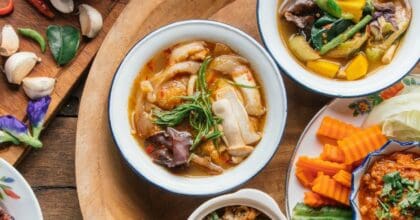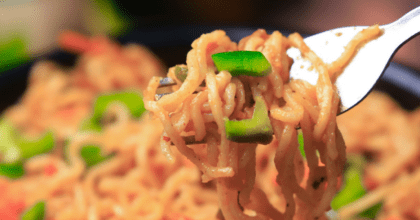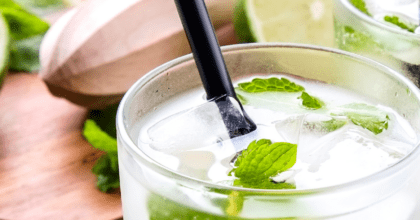India vies with China for the title of world’s biggest packaged tea market
While the story of tea begins in China, the latest research from Mintel reveals that India currently vies with China as the world’s biggest packaged tea* market. In 2017**, India consumed a total retail volume of 678,200 tonnes worth of packaged tea, followed by China in second place at 576,800 tonnes. Meanwhile, Turkey (173,400 tonnes), Russia (134,200 tonnes) and Japan (92,900 tonnes) complete the top five global ranking.
While India is the leading market for retail volume sales globally, Turkey takes the lead when it comes to per capita consumption. Behind Turkey, European countries feature strongly in the global per capita consumption ranking: the average Turkish consumer guzzled 2.15kg of packaged tea last year, followed by British consumers at 1.15kg, Russian consumers at 0.91kg, Japanese consumers at 0.74kg, and German consumers at 0.67kg.
“Traditionally, Chinese consumers prefer fresh tea in loose formats, so it makes sense that our research shows that India is ahead of China as the world’s leading retail packaged tea market,” said Loris Li, Associate Director, Food and Drink, at Mintel.
Indeed, Mintel research reveals that in 2017, most Chinese consumers (78%) were frequent users of freshly brewed loose tea. Ready-to-drink (RTD) tea drinks also enjoy high penetration in China, with half (49%) of Chinese consumers identified as frequent RTD tea drinkers. Tea bags, on the other hand, are frequently enjoyed by 45% of these Chinese respondents.
“Looking beyond top level market sizes and consumption figures, there is an interesting new tea culture brewing in both hot and ready-to-drink tea, fuelling global and regional innovation activity,” commented Julia Buech, Global Food & Drink Analyst at Mintel.
According to Mintel Global New Products Database (GNPD), hot tea launches in Asia Pacific accounted for 27% of all global new tea product launches*** in 2017, while RTD tea launches in in Asia Pacific accounted for 13% of these global tea launches. Hot tea introductions in Europe accounted for 30% of the world’s new tea launches in 2017, while European RTD tea launches represent 7% of these launches. Meanwhile, North American hot tea launches accounted for 4% of the global pie of overall tea launches, while RTD tea launches take up 3% of this share.
“Although hot tea continues to be the biggest tea subcategory globally, RTD tea has started to build its base in the global tea market—following the same developments seen in the global coffee market. The RTD tea landscape is changing dramatically; having suffered for years from a ‘cheap’ and unhealthy image, the category is now undergoing a lifestyle makeover. Artisanal production attributes, such as cold brew, are helping create a new premium tier in the segment. Our research shows that cold brew is just emerging as an upscale taste and quality descriptor in RTD tea. Better-for-you innovations from major beverage companies are further boosting the development of the RTD tea category,” continued Buech.
Still niche, the ‘cold brew’ descriptor featured in just 1% of global RTD tea launches in 2017, according to Mintel GNPD, with Asia Pacific accounting for 55% of these introductions, followed by Europe with 25%.
In addition, data from Mintel GNPD shows that tea bags were the leading format type of global new hot tea launch activity in 2017. Indeed, 84% of all new tea launches in North America during this period were tea bags. In Europe, tea bags accounted for 75% of all new regional tea launches in 2017, and 45% in Asia Pacific.
What’s more, Mintel research confirms that Asia Pacific is currently driving loose formats in packaged hot tea tea innovation. Of all new tea launches in Asia Pacific in 2017, loose tea formats accounted for 36%, compared to 19% in Europe and 12% in North America.
“Most Asian consumers are, at the end of day, traditionally inclined to enjoy tea in loose formats—which is also likely the reason behind Asia Pacific’s lead in driving loose formats in packaged tea innovation. However, the tea bag category in China, and the wider Asia Pacific region, has definite growth potential as we see more and more tea bag innovations coming from Asian tea manufacturers,” added Li.
Finally, in a cluttered field of functional claims, energy has grown as a focus of innovation. Mintel GNPD shows that in 2017, teas described as ‘energy-boosting’ accounted for 11% of all functional tea introductions globally, up from 9% in 2015. It seems boosting the emphasis on energy can help tea compete with coffee, especially for morning occasions.
Indeed, Mintel research reveals that 62% of US adults drink coffee in the morning, while 24% drink tea. In China, the door is open for tea to adopt an ‘energy drink’ status; as many as two in three (65%) drink RTD tea when doing outdoor sports (eg jogging, playing football, cycling) while 58% drink RTD tea when doing exercise at gym or sports centres. In the UK, over one in five (22%) consumers is interested in seeing ‘energy-boosting’ as a health or functional benefit provided by tea.
“In a world that is becoming more health conscious, naturally functional drinks are ever more relevant. Tea consumers continue to show interest in products that can target specific ailments and provide diverse functions, from energy-boosting and anti-inflammatory to slimming and relaxing benefits. In this saturated field, ‘energy’ has grown in significance as a focus of innovation activity among tea companies and will continue to be a market with potential in the near future,” Buech concludes.
*Mintel’s definition of packaged tea market talks about household consumption of packaged tea (this excludes out of home and unpackaged, loose tea formats)
**Mintel estimates
***Mintel definition of tea launches includes packaged hot tea and ready-to-drink (iced) tea
For the latest in consumer and industry news, top trends and market perspectives, stay tuned to Mintel News featuring commentary from Mintel’s team of global category analysts.
-
Mintel StoreGet smart fast with our exclusive market research reports, delivering the latest data, innovation, trends and strategic recommendations....View reports
-
Mintel LeapMintel Leap is a revolutionary new AI-powered platform that will transform your research process....Book a demo







































